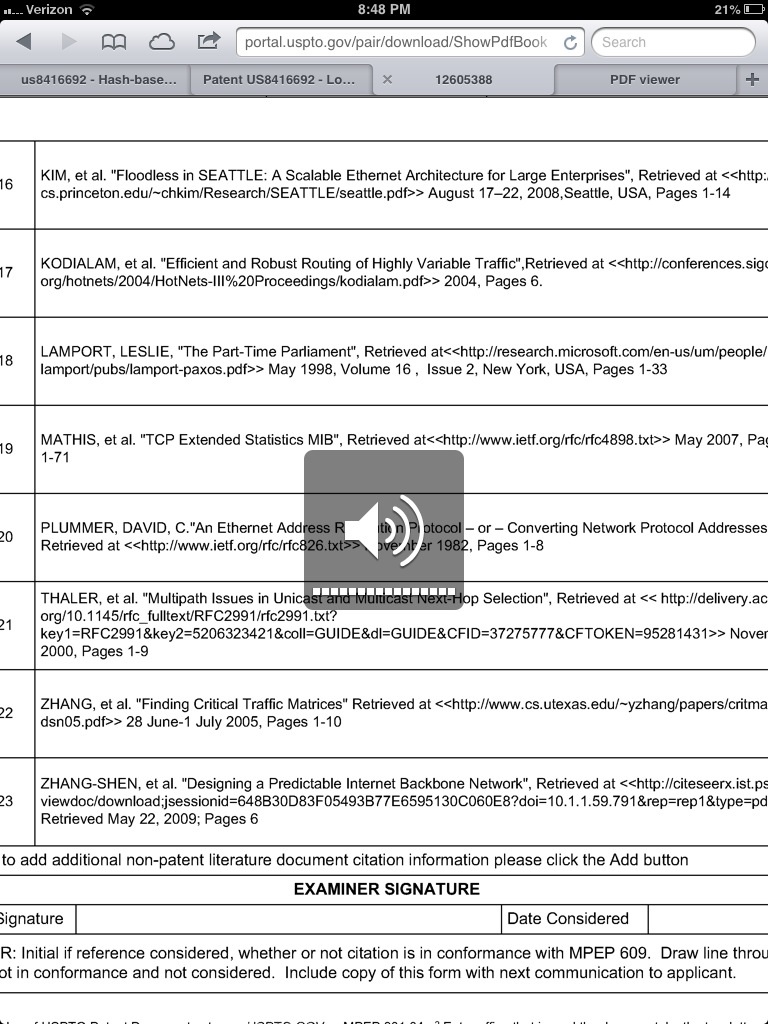AN OVERBROAD PATENT ON BALANCING WEB TRAFFIC DISTRIBUTION - This patent from Microsoft seeks to patent the idea of using multiple load balancers with a shared virtual IP address to distribute website traffic loads.
TITLE: LOAD BALANCING ACROSS LAYER-2 DOMAINS
Summary: The present application relates to network configurations and specifically to scalable load balancing network configurations. One implementation includes an external client coupled to a scalable load balancing system. The scalable load balancing system includes a load balancing layer that is configured to encapsulate individual incoming packets of a packet flow from the external client. The load balancing layer is further configured to route the incoming packets to target devices on the system. The target devices can span multiple IP subnets. The incoming packets can pass through one or more load balancers of the load balancing layer before reaching individual target devices. Individual target devices can be configured to route at least some outgoing packets of the packet flow to the external client without passing through any of the one or more load balancers.
Translated from legalese: Microsoft is attempting to patent a system that comprises multiple load balancing servers that share a common virtual IP address that use a consistent hashing algorithm and IP-in-IP tunneling to distribute incoming traffic to a larger set of application servers.
Publication Number: US Patent 8,416,692
Related Family Member: Patent Application WO2010138936 A3
Assignee: Microsoft, Inc.
Prior Art Date: Seeking Prior Art predating May 28, 2009
There are multiple claims in the patent, all of which appear to be common features of existing load balancing and routing products. It's unclear to me whether the claim is over all of the below features, or only when they are all used in combination. The features are:
- Equal-cost multi path routing to multiple load balancing servers that share a common IP address. Also known as "anycast" routing.
- Use of a consistent hashing algorithm on a load balancing server to deterministically choose a destination server for any given incoming packet.
- Encapsulation of incoming packets via IP-in-IP tunneling when forwarding to the application server.
- The ability of the application server to respond directly to the client, using the original VIP IP address seen in the encapsulated packet as a source address. Also known as Layer 3 Direct Server Return.
Good prior art would be documentation of a system that supports any or all of the above features dating prior to May 28, 2009.

